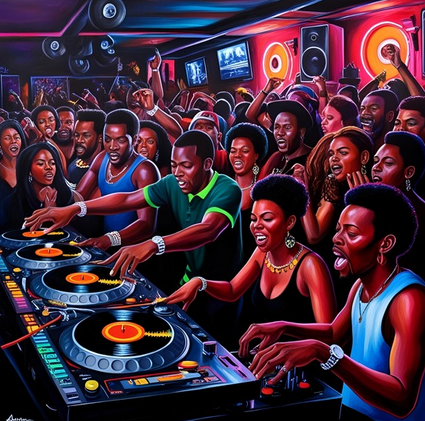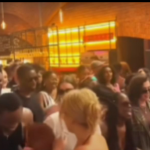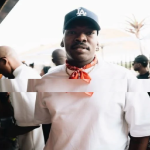
Understanding Amapiano: The South Africa’s Global Sound Phenomenon
Amapiano has quickly grown from a local township sound to a global music phenomenon. With its infectious beats, jazzy melodies, and deep-rooted cultural identity, Amapiano has taken the world by storm. But what exactly is Amapiano? Who owns it? What does it mean, and how does it shape the music scene today? In this article, we explore and answer these questions, shedding light on one of the most influential genres to come out of South Africa in recent decades.
1. What is Amapiano?
Amapiano is a South African music genre that emerged in the mid-2010s, primarily in the townships of Gauteng province, including Pretoria and Johannesburg. The term “Amapiano” is derived from the Zulu language, meaning “the pianos.” At its core, Amapiano is a fusion genre, combining elements of deep house, jazz, kwaito, lounge music, and more recently, Afrobeat and hip-hop.
Characterized by its slow tempo (around 112 BPM), log drum basslines, percussive rhythms, and airy synths, Amapiano creates a laid-back yet danceable vibe. It’s music for parties, house chillouts, car rides, and spiritual dance floors. One of the defining features of the genre is the “log drum” sound, a unique percussive bass that pulses through most Amapiano tracks and sets it apart from other house sub-genres.
2. What is Amapiano Music?
Amapiano music isn’t just a sound—it’s a movement, a lifestyle, and a form of expression deeply rooted in South Africa’s youth culture. The music represents both escapism and identity. For many South African young people, Amapiano music is a reflection of their environment, their struggles, and their joy.
Musically, Amapiano draws from:
Kwaito: A slower house music genre that dominated South African music in the late 90s and early 2000s.
Deep House: For its soulful, laid-back, and moody atmosphere.
Jazz: Especially in its instrumental progressions and piano melodies.
Bacardi house: An early Pretoria-born sound known for its raw, percussive, and street-rooted vibe.
Amapiano music typically features:
Extended instrumental intros.
Minimalistic lyrics or repeated vocal chants.
Piano or keyboard melodies.
Distinctive percussive elements and log drums.
Amapiano isn’t just played at parties and clubs it’s found in taxis, at street corners, in barbershops, and on digital platforms like TikTok and YouTube, where it has gained massive traction. The “private school Amapiano” substyle adds a more refined, jazzy, and instrumental focus, showing the genre’s range and depth.
3. Who Owns Amapiano?
One of the most debated topics in Amapiano culture is the question of ownership. “Who owns Amapiano?” is as complex as asking “Who owns hip-hop?” It is not the creation of a single individual, but rather a collective innovation that grew organically in the townships.
That said, several names are consistently mentioned as pioneers or early contributors to the Amapiano genre:
MFR Souls (Maero and Force Reloaded)
Kabza De Small, widely known as the “King of Amapiano”
DJ Maphorisa, who played a major role in popularizing and globalizing the genre
Josiah De Disciple and Mr JazziQ, as members of the former duo JazziDisciples
Vigro Deep, one of the youngest and most influential producers in the scene
These artists, among others, helped develop the genre’s structure and sound between 2014 and 2017. However, Amapiano’s rapid growth was a community-driven effort produced in bedrooms, shared through WhatsApp, and fueled by township youth before it became mainstream.
Therefore, Amapiano cannot be “owned” in the traditional sense. It is a cultural product, belonging to the South African people, specifically the youth in the townships, who have continuously shaped and evolved it. The genre thrives because of collective contribution, not individual ownership.
Legal or commercial ownership, such as record labels or artists trademarking the genre’s name or elements, can create conflicts but culturally, Amapiano remains a movement by the people for the people.
4. What Does Amapiano Mean?
The word Amapiano is a Zulu plural form of ipiano, which literally translates to “the pianos.” The name pays homage to the genre’s signature sound—melodic piano chords and jazzy keyboard riffs that form the backbone of many Amapiano tracks.
Beyond the literal translation, Amapiano has taken on symbolic meanings:
It represents freedom of expression, allowing young producers to create without industry gatekeepers.
It stands for community and collaboration, with many artists frequently collaborating on tracks and albums.
It’s a movement of cultural pride, where local languages, dances (like pouncing cat, vosho, and bacardi shuffle), and fashion are celebrated unapologetically.
In essence, “Amapiano” doesn’t just mean “pianos” anymore. It now symbolizes a cultural wave that has reshaped the sound of African youth and crossed borders into the global scene.
Amapiano Goes Global
Over the last few years, Amapiano has made waves internationally. DJs and producers across Europe, the UK, Nigeria, Ghana, and even the US have started to incorporate Amapiano elements into their music. Artists like Major League DJz, Uncle Waffles, and Focalistic have taken the genre global, performing in countries across the world and collaborating with international acts.
Its rise on platforms like TikTok has also amplified its reach, with viral dance challenges and millions of views helping songs break into the charts.
Conclusion
Amapiano is more than just music it’s a culture, a language, and a revolution. It began in the South African townships, born from the dreams and creativity of a generation that refused to be silenced. Today, it’s a global sound that’s still evolving, still influencing, and still deeply rooted in its community origins.
To recap:
What is Amapiano? A unique, township-born music genre from South Africa that fuses deep house, jazz, and kwaito.
What is Amapiano music? A laid-back, soulful, and rhythmic sound known for its signature log drum and piano melodies.
Who owns Amapiano? No one person, it belongs to the people, shaped by a community of artists and producers.
What does Amapiano mean? Literally “the pianos,” but symbolically, it stands for cultural pride, expression, and unity.
As the genre continues to evolve, one thing remains clear: Amapiano is here to stay not just as music, but as a movement redefining Africa’s place in the global music scene.








Be the first to comment